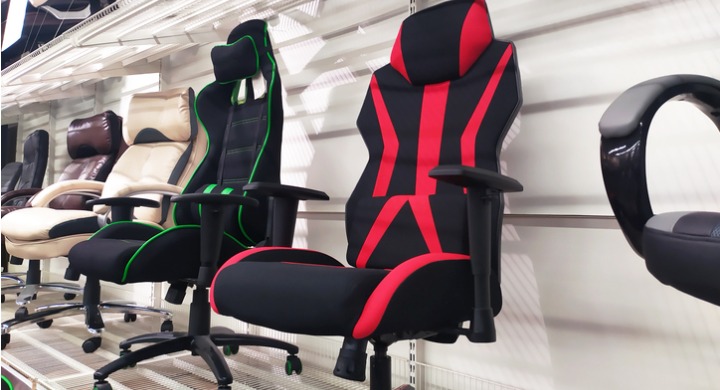
Gaming chairs might look more ergonomic than office chairs with their high backs and head support but are they really? If you could only choose one chair for work and pleasure, which style of chair should it be to protect your body from long hours of sitting?
Differences Between Gaming and Office Chairs
This is a really tricky comparison to make. Fundamentally the desk based activities between gaming & office work require very different features from the chair. While a gaming chair might look more appealing than an office task chair there are several features on a gaming chair that not required, or recommended, for an office based role. Let's take a closer look.
Winged Back Support
Commonly gaming chairs are designed with winged backs, or boosted lateral support, sometimes looking like a car seat. Lateral support is primarily used to help keep your body straight or reduce sideways movement. The winged backrest enhances that feeling of ‘sitting in the drivers seat’. The backrest for an ergonomic office chair has many & varied back shapes and profiles & there are certainly models that are based around a boosted lateral profile. An over-pronounced winged back style can be restrictive & prevent you from keeping your elbows tucked in for a good compact ergonomic seated position. This back style generally works for gamers as the arm position is in front of their body holding a controller or working a gaming keyboard.
Most commonly office chairs with boosted lateral support are preferred by narrowed shouldered slender body shapes, while it can be uncomfortable for broader shouldered larger builds.
Armrests
Most gaming chairs have armrests to support the gamers’ shoulders & forearms to help facilitate the long hours spent in the chair. Ergonomic office chairs have the option of armrests or no armrests, however in an office chair situation arm rests are generally not recommended unless there is a medical or physical requirement. Most commonly armrests are only height adjustable, however can usually be upgraded for up and down, front to back or sideways in and out movement.
Recline
Most gaming chairs recline - some can go almost horizontal. Research shows that reclining takes pressure off the discs in the lower back. The research involved MRI scans and showed that reclining at an angle of 135 degrees is the least strenuous angle. A good ergonomic designed office chair should have a back tilt function however is usually restricted to no more than 10 - 20 degrees. A full recline in an office based task would be highly unusual, therefore not required in an office chair.
Headrest
Given the nature of gamers viewing activity they can often lean back or recline so a fixed headrest is appealing to support the neck and head. The headrest often has a cutout to accommodate the strap of a neck pillow. An adjustable pillow allows you to move the pillow up and down so it’s in the right position to support your neck. A headrest might be sort after in an office chair if the users role is heavily based on the phone, engaged in lengthy conversations, spends significant time viewing screens, or there is a medical or physical requirement. Occasionally the look is preferred by management or executive roles.
Lumbar support
A neck pillow is often accompanied by a lumbar pillow on a gaming chair. The pillow is strapped to the chair back and can be moved to support the curvature of the back. Correctly designed & fitted ergonomic chairs should have in-built height adjustable lumbar support & back shapes profiles that work for you. If you need to add a cushion or pillow to your office chair, it's time to invest in a correctly fitted chair.
Seat adjustment
A good ergonomically designed office chair should have at least 4 points of adjustment - Seat Height, Seat Tiit, Back Rest Tilt & Back Rest Height. Anything less than this will limit your ability to fully accommodate a healthy seated position. Some models come standard with a ‘Seat Slide’, however this can also be an optional extra. A seat slide offers the flexibility to increase the depth of the seat pan - particularly useful for tall users or multiple user situations. Gaming chairs are more likely to have a fixed seat.
Which Chair Should You Choose?
There are quite a few factors to consider when you’re weighing up the benefits of gaming vs office chairs. Ideally, you would have one chair for each activity, however if you only have the space and budget for one, choose a high quality option that suits the activity you are most often engaged in.
Whatever your budget invest in the option that offers the most flexibility for adjustment with the shape that best suits your body. Your body will very quickly tell you what it likes. Of course in any activity try to avoid sitting for long periods of time - introduce movement as often as possible.
If you'd like to discuss your specific needs further, or would like more information on a particular chair, don't hesitate to visit our Perth showroom, call us on (08) 9240 7066 or
contact us online.